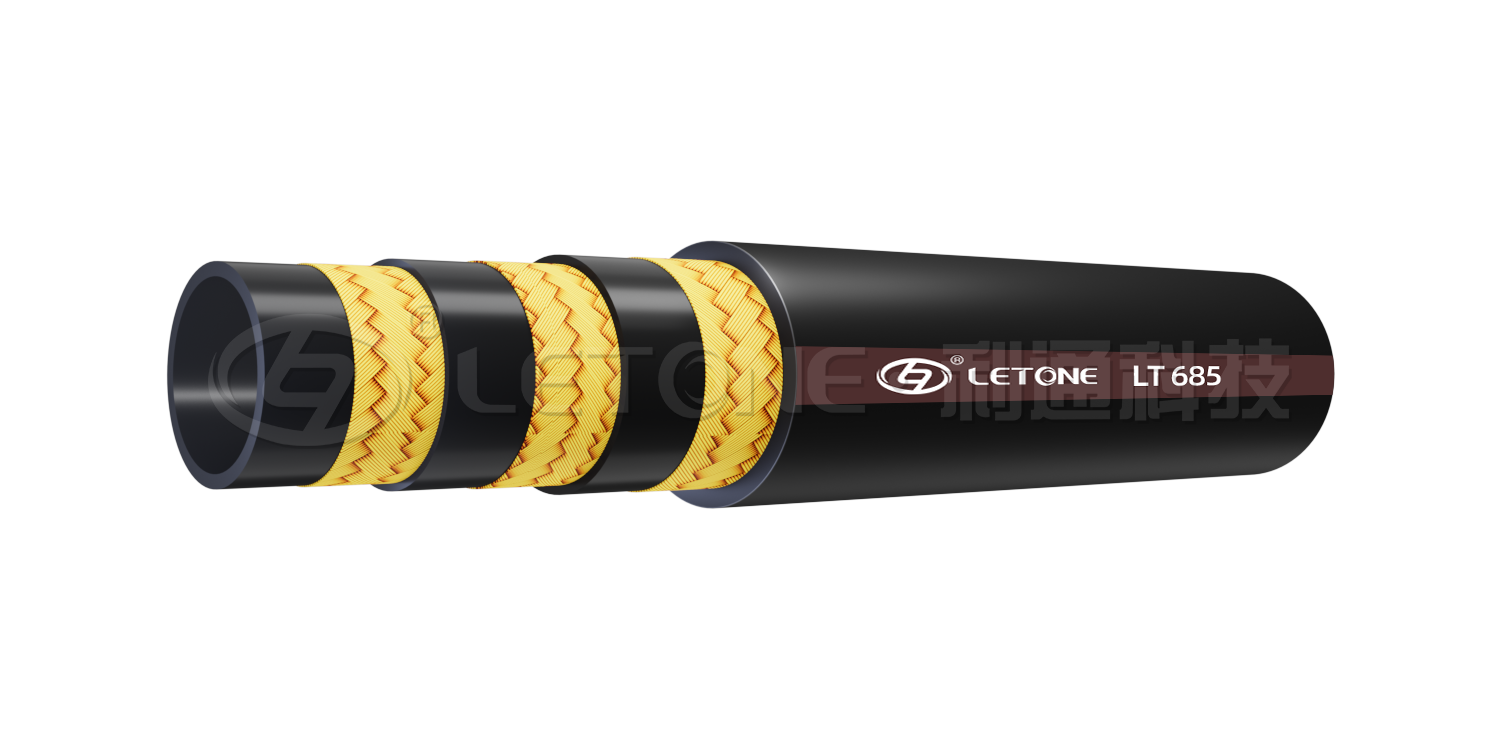Uncovering the technical secrets of wire braided hose assembly: the lightweight balance between high
2025-05-29 14:25:41
In modern industrial applications, wire braided hose assembly, as a key flexible connection component, is widely used in hydraulic systems, petrochemicals, automobile manufacturing, aerospace and other fields. With its excellent high pressure resistance, wear resistance, corrosion resistance and other properties, it has become a core component to ensure system stability and safety. However, in the context of increasing requirements for product performance, how to effectively find the best balance between high pulse, high pressure resistance and lightweight design has become the focus of industry development.
Basic structure and material selection of wire braided hose assembly
The basic structure of wire braided hose assembly is mainly composed of inner tube, reinforcement layer (ie wire braided layer) and outer protective sleeve. The inner tube is generally made of oil-resistant and heat-resistant synthetic rubber with good medium transfer performance. The reinforcement layer is the key to the entire hose assembly, which is usually woven with high-strength steel wire. The steel wire is arranged at a certain braiding angle and density to form a mesh structure, which greatly enhances the tensile strength and compressive resistance of the hose. The outer protective sleeve is responsible for protecting the entire tube body and making it have good wear resistance.
The choice of materials not only ensures the performance of the hose, but also affects the weight and service life of the entire assembly. In recent years, with the advancement of materials science, new synthetic materials and coating technologies have emerged, providing more options for optimizing the comprehensive performance of the hose. For example, the application of polytetrafluoroethylene (PTFE) materials and multi-layer composite fibers has been proven to be very effective in improving medium tolerance and reducing the weight of the hose.
Challenges and solutions of high pulse and high pressure resistance technology
In hydraulic systems, wire braided hoses must withstand frequent pressure fluctuations, that is, high pulse conditions. Frequent pressure changes will accelerate the fatigue process of the hose and eventually lead to hose failure. Therefore, how to improve the fatigue resistance of the hose becomes the key to solving this problem.
Strengthening fabric structure and optimizing braiding process
First of all, in the design of the reinforcement layer, it is particularly important to optimize the density and angle of the steel wire braiding. Through a combination of computer simulation and experimental testing, the optimal braiding parameters can be found to ensure that the steel wire can reasonably disperse the stress when under pressure. In addition, the use of high-strength steel wire material not only increases the pressure resistance of the braided layer, but also extends the service life of the hose.
Application of innovative coating technology
Combined with the innovation of coating technology, it provides a new idea for improving the fatigue resistance of the hose. By adding a special wear-resistant coating to the inner layer, or adding aging-resistant and anti-oxidation materials to the outer layer, the wear of the hose in a high-pressure environment can be effectively reduced and its service life can be extended.
Lightweight design: a balance between improving performance and reducing costs
In the pursuit of lightweight design, how to reduce the weight of the hose as much as possible while ensuring high-pressure resistance is another technical issue faced by manufacturers.
Development and application of new synthetic materials
The development of new synthetic materials is an important way to achieve lightweight hoses. For example, the application of high-strength, low-density materials such as high molecular weight polyethylene (UHMWPE) in the inner and outer layer designs of the hose can not only ensure the strength and wear resistance of the pipe body, but also greatly reduce the overall weight of the hose.
In summary, the steel wire braided hose assembly plays an important role in the modern industrial system. Driven by continuous innovation and technological progress, future steel wire braided hoses will be more resilient, flexible and intelligent, meeting more complex and changing industrial needs. At the same time, continued strengthening of technical exchanges and cooperation will further promote the global development of this field.